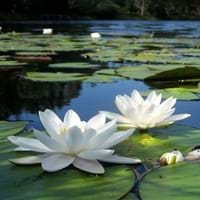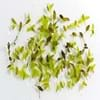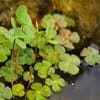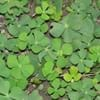Life Span
Perennial
Perennial
Type
Aquatics, Flowering Plants
Vegetable
Origin
Not Available
Hybrid origin, Mexico, Central America, South America
Types
Not Available
Not Available
Habitat
Ponds
Coastal Regions
USDA Hardiness Zone
4-11
11-15
AHS Heat Zone
Not Available
12-1
Sunset Zone
Not Available
A1, A2, A3, H1, H2, 1a, 1b, 2a, 2b, 3a, 3b, 4, 5, 6, 7, 8, 9, 10, 11, 12, 13, 14, 15, 16, 17, 18, 19, 20, 21, 22, 23, 24
Habit
Spreading
Upright/Erect
Flower Color
White
Yellow
Flower Color Modifier
Bicolor
Bicolor
Fruit Color
Non Fruiting Plant
Red
Leaf Color in Spring
Light Green
Green, Dark Green
Leaf Color in Summer
Light Green
Green, Dark Green
Leaf Color in Fall
Green
Green, Dark Green
Leaf Color in Winter
Green
Green, Dark Green
Plant Season
Early Summer, Late Summer
Spring, Summer, Fall
Sunlight
Partial Sun
Full Sun
Type of Soil
Aquatic Plant
Loam, Sand
The pH of Soil
Aquatic Plant
Neutral
Soil Drainage
Average
Well drained
Bloom Time
Early Summer, Late Summer
Indeterminate
Tolerances
waterlogging
Drought
Where to Plant?
In Water
Container, Ground
How to Plant?
Stem Planting
Grafting, Seedlings
Plant Maintenance
Medium
Medium
Watering Requirements
Plant grows in water
Needs more water during establishment
In Summer
Aquatic Plant
Lots of watering
In Spring
Aquatic Plant
Moderate
In Winter
Aquatic Plant
Average Water
Soil pH
Aquatic Plant
Neutral
Soil Type
Not Applicable
Loam, Sand
Soil Drainage Capacity
Aquatic Plant
Well drained
Sun Exposure
Partial Sun
Full Sun
Pruning
No need to prune
Pinch or prune as they grow to promote branching and bushiness
Fertilizers
Fertilize the first year
14-14-14 Fertilizer, Compost
Pests and Diseases
Leaf eating pests, Sap-Sucking Insects, Stem rot
Anthracnose, Aphids, Red blotch, Rust
Plant Tolerance
waterlogging
Heat Tolerance, Salt and Soil Compaction
Flower Petal Number
Single
Single
Fragrant Bark/Stem
No
Yes
Foliage Texture
Fine
Medium
Foliage Sheen
Matte
Matte
Attracts
Fishes
Aphids, Not Available, Squirrels
Allergy
Not Available
Stomach pain, Vomiting
Aesthetic Uses
Showy Purposes, Water gardening
Used in parkland
Beauty Benefits
Good for skin, Moisturizing, Weightloss
Anti-ageing, Blackheads, Reduce Bruises
Environmental Uses
Not Available
Shadow Tree, Soil protection
Medicinal Uses
Antibacterial, Anti-fungal, anti-inflammatory, Antioxidants, Astringent, Clears heat, Combats Stress, Detoxification, Diabetes, High cholestrol, Improve heart health, Liver problems, Low Blood Pressure, Phosphorus, Rich in Iron, Vitamin B, Vitamin C
Dehydration, Diabetes, Diarrhea, Nutrients, Weight loss
Part of Plant Used
Leaves, Root, Stem
Fruits
Other Uses
Can be made into a herbal tea, Culinary use, Used as Ornamental plant, Used in herbal medicines
Application in Handicrafts, Food for animals, Showy Purposes
Used As Indoor Plant
Yes
No
Used As Outdoor Plant
Yes
Yes
Garden Design
Bog Garden, Water Gardens
Edible, Herb, Vegetable
Botanical Name
Nymphaea lotus
Manilkara zapota
Common Name
white Egyptian lotus, tiger lotus, white lotus or Egyptian white water-lily
sapodilla , chikoo, Sapota
In German
Tigerlotus
Breiapfelbaum
In French
Lotier d'Égypte, Lotus tigré
Sapotillier
In Spanish
loto tigre, nenúfar blanco egipcio
chicle
In Greek
λευκό λωτού
sapodilla
In Portuguese
nenúfar-branco, lótus-branco, lótus-do-egipto, loto-sagrado-do-egito e lótus-sagrado-do-egito
sapodilla
In Polish
białego lotosu
Pigwica właściwa, sapodilla
In Latin
albus Lotus
sapodilla
Phylum
Magnoliophyta
Magnoliophyta
Class
Magnoliopsida
Magnoliopsida
Order
Nymphaeales
Ericales
Family
Nymphaeaceae
Sapotaceae
Clade
Angiosperms
Angiosperms, Asterids, Eudicots
Tribe
Not Available
Sapoteae
Subfamily
Not Available
Sapotoideae
Number of Species
Not Available
Importance of White Lotus and Sapodilla
Want to have the most appropriate plant for your garden? You might want to know the importance of White Lotus and Sapodilla. Basically, these two plants vary in many aspects. Compare White Lotus and Sapodilla as they differ in many characteristics such as their life, care, benefits, facts, etc. Every gardener must at least have the slightest clue about the plants he wants to plant in his garden. Compare their benefits, which differ in many ways like facts and uses. The medicinal use of White Lotus is Antibacterial, Anti-fungal, anti-inflammatory, Antioxidants, Astringent, Clears heat, Combats Stress, Detoxification, Diabetes, High cholestrol, Improve heart health, Liver problems, Low Blood Pressure, Phosphorus, Rich in Iron, Vitamin B and Vitamin C whereas of Sapodilla is Dehydration, Diabetes, Diarrhea, Nutrients and Weight loss. White Lotus has beauty benefits as follows: Good for skin, Moisturizing and Weightloss while Sapodilla has beauty benefits as follows: Good for skin, Moisturizing and Weightloss.
Compare Facts of White Lotus vs Sapodilla
How to choose the best garden plant for your garden depending upon its facts? Here garden plant comparison will help you to solve this query. Compare the facts of White Lotus vs Sapodilla and know which one to choose. As garden plants have benefits and other uses, allergy is also a major drawback of plants for some people. Allergic reactions of White Lotus are Not Available whereas of Sapodilla have Stomach pain and Vomiting respectively. Having a fruit bearing plant in your garden can be a plus point of your garden. White Lotus has showy fruits and Sapodilla has showy fruits. Also White Lotus is not flowering and Sapodilla is not flowering . You can compare White Lotus and Sapodilla facts and facts of other plants too.





